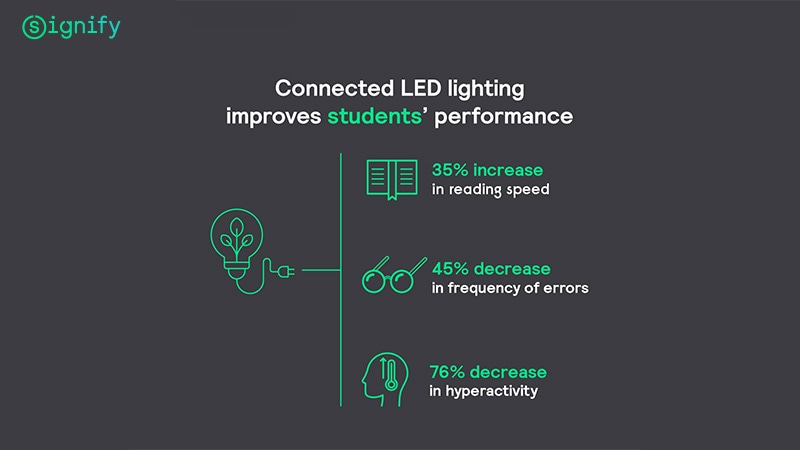May 30, 2023
May 30, 2023
When the pens went down on a new agreement to increase energy efficiency rates across the European Union, it’s hard to know whether negotiators were thinking about what the agreement’s impact would be on millions of young students.
The debate around energy efficiency is often carried on by policymakers and industry experts, and not often by teachers and schoolchildren. Nevertheless, the way we use energy is directly connected to how young people learn. Energy efficiency offers students increased quality of life and improved learning environments. And schools benefit from lower energy bills, reduced carbon emissions, and more engaged teachers.
The political deal on a revised energy efficiency directive (EED), reached in Brussels in March 2023, puts in place a compulsory target to reduce final energy consumption across the EU by 38% in 2030. This increased target is a result in part of the progress that the EU has made so far on energy efficiency—an average 29% reduction on projections for 2030.

An ambitious target
The renewed ambition represents an awareness of the key role energy efficiency plays in hitting carbon targets, and specifically the EU’s Fit for 55 plan to cut emissions in 2030 by at least 55% compared to 1990 levels. The new EED target translates into around 760 million tons of oil equivalent annually, a huge amount which will make a dent in the bloc’s significant reliance on imported fossil fuels.
Arianna Vitali, secretary-general of the Coalition for Energy Savings, a non-profit association headquartered in Brussels, said there needed to be more assurances that the deal will be delivered on time: “With energy saving becoming more and more essential to solve the energy security, affordability and climate challenges, member states must act fast to implement the revised provisions so that benefits for citizens and businesses can materialize,” she commented.
Enhanced efficiency
The EED includes a special provision for the public sector to lead the way in making fresh efficiency savings with a specific year-on-year target. And member states will be required to renovate at least 3% of floor space owned by public bodies per year.
The impact on classrooms across Europe could be huge. There are almost as many young people in education in the EU as there are adults in the workplace. But classrooms have yet to receive the same amount of attention or investment as professional offices. As a result, classrooms are often inappropriately lit and deeply energy inefficient. Along with the negative impacts on learning come health concerns. Research from the University of New South Wales has found the rates of myopia, in part caused by poor light exposure, are growing fast and could hit 50% of the global population by 2050.
Better conditions
At Signify, we’ve been researching the ways in which new lighting technologies can improve educational experiences for both teachers and students. Interact, a cloud-based connected lighting system and platform offered by Signify, delivers high levels of energy efficiency along with extraordinary illumination experiences and advanced data-driven capabilities.
For example, Interact provides insights into how spaces are used, when they are occupied, and at what room temperature. Dimming schedules based on occupancy and usage patterns maximize energy savings over conventional lighting systems. The technology has been deployed by the Eindhoven University of Technology (TU/e) in one of its buildings dating back to the 1960s and used by up to 4,000 people. The results were resoundingly positive: an 80% cut in carbon emissions and a 60% saving on energy bills.
Circadian lighting capabilities can greatly impact the concentration, comfort, and engagement of children in classroom environments. With tuneable LED luminaires, Interact can recreate indoors the changing levels and spectral profile of sunlight over the course of the day.
Better learning
Research from the government of Hamburg found that deploying connected LED lighting yields significant payoffs in concentration, attention span, and behavior. Over the course of a year, students were found to have a 35% increase in reading speed, a 45% decrease in the frequency of errors, and a 76% decrease in hyperactivity.

Harry Verhaar
Head of Global Public and Governmental Affairs, Signify
To date, the uptake of smart lighting systems in educational buildings across Europe has been low. The revised EED could provide the market with a much-needed boost in the right direction, improving a whole generation of young people’s learning experiences. The current generation of students will be the ones most affected by climate change. It is crucial we offer them a head start before going out into the world and upgrading their classrooms should be the first step.
The scene is now set for businesses and governments to roll up their sleeves and take meaningful action.
Listen to this article, and discover other topic related blog podcasts, here.
Signify Global Media relations - Professional Lighting
Claire Phillips
Tel: +44 7956 489081
Email: claire.phillips@signify.com
Signify (Euronext: LIGHT) is the world leader in lighting for professionals, consumers and the Internet of Things. Our Philips products, Interact systems and data-enabled services, deliver business value and transform life in homes, buildings and public spaces. In 2023, we had sales of EUR 6.7 billion, approximately 32,000 employees and a presence in over 70 countries. We unlock the extraordinary potential of light for brighter lives and a better world. We have been in the Dow Jones Sustainability World Index since our IPO for seven consecutive years and have achieved the EcoVadis Platinum rating for four consecutive years, placing Signify in the top one percent of companies assessed. News from Signify can be found in the Newsroom, on X, LinkedIn and Instagram. Information for investors is located on the Investor Relations page.
